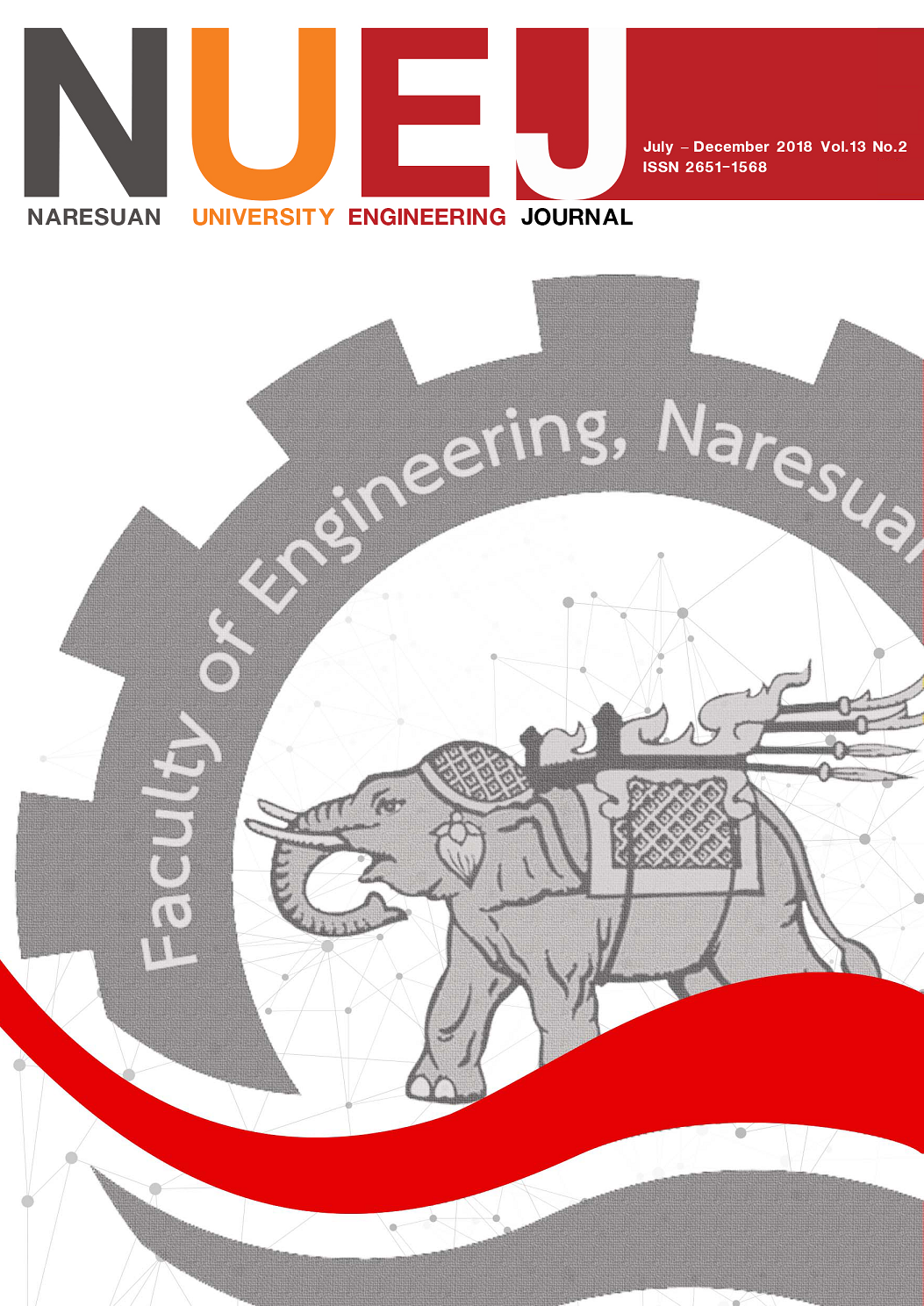Development of Crack Initiation Algorithm in Crack Analysis of Rock Mass by Element Free-Galerkin Method
Main Article Content
Abstract
The element free-Galerkin (EFG) method has been continuously developed for crack propagation analysis. Previous researches focus on comparing the accuracy of the propagation direction with the results of the experiment in laboratory of which the crack initiation can be well specified. Thus, the attention on crack initiation prediction has been ignored. This becomes the drawback of implementation of EFG in full-scale engineering problem, particularly in the field of geotechnical engineering which the crack initiation point generally cannot be predetermined. This research aims to develop the algorithms for assessing the initial point of failure to be equipped with the EFG method. The development is based on tensile failure criterion under plane strain condition. The developed algorithm is verified and validated by the failure behavior of rock mass surrounding a gas storage circular tunnel under high internal pressure problem. The in-situ stress ratio of 0.5, 1 and 3 are considered in the study. The analysis results can thus be compared with the existing results of analytical solutions and physical model tests. The comparisons show that the crack initiation points from the prediction using the developed algorithm have good agreement with the close form solutions and the experiments. Moreover, with a series of parametric study, not only the effect of in-situ stress condition, but also those of the depth and rock tensile strength can be simulated by the method developed in this study. The algorithm developed is therefore acceptable.
Article Details
References
[2] Yang, Z.J. & Chen, J. (2005). Finite element modelling of multiple cohesive discrete crack propagation in reinforced concrete beams. Engineering Fracture Mechanics, 72(14), 2280-2297.
[3] Chen, J.S., Hillman, M. & Chi, S.W. (2017). Meshfree Methods: Progress Made after 20 Years. Journal of Engineering Mechanics.
[4] Belytschko, T., Lu., Y.Y. & Gu, L. (2009). Element Free-Galerkin Method. International Journal for Numerical Methods in Engineering, 37, 229-256.
[5] Soparat, P. & Nanakorn, P. (2008). Analysis of Cohesive Crack Growth by the Element-Free Galerkin Method. Journal of Mechanics, 24(1), 45-54.
[6] Tunsakul, J., Jongpradist, P., Hyung-Mok, K. & Nanakorn, P. (2018). Evaluation of rock fracture patterns based on the element-free Galerkin method for stability assessment of a highly pressurized gas storage cavern. Acta Geotechnica. 13(4). 817-832.
[7] Tunsakul, J., Jongpradist, P., Soparat, P., Kongkitkul, W. & Nanakorn, P. (2014). Analysis of fracture propagation in a rock mass surrounding a tunnel under high internal pressure by the element-free Galerkin method. Computers and Geotechnics, 55, 78-90.
[8] Lancaster, P. & Salkauskas, K. (1981). Surface Generated by Moving Least Square Methods. Mathematics of Computation, 37(155), 141-158.
[9] Belytschko, T. & Fleminga, M. (1999). Smoothing, enrichment and contact in the element-free Galerkin method. Computers & Structures, 71(2), 173-196.
[10] Farmer, L.W. (1983). Engineering Behaviour of Rocks, Second Edition. Chapman and Hall, London. 10-15.
[11] Punya-In, Y. (2014). Parametric study on Fracture Behaviors of Rock masses around High Pressurized Gas Storage Cavern by Numerical Analysis, Master of engineering thesis, Civil Engineering, Faculty of Engineering. King Mongkut’s University of Technology Thonburi.
[12] Savin, G.N. (1961). Stress concentration around holes. Pergamon Press Publisher.
[13] Bray J.W. (1987). Some applications of elastic theory. In Analytical and computational methods in engineering rock mechanics. Allen and Unwin Publisher. 32–94.
[14] Silabampen, E. (2017). Development of Crack Initiation Algorithm in Crack Analysis of Rock Mass by Element Free-Galerkin Method. Master of engineering thesis. King Mongkut’s University of Technology Thonburi. 41-60.
[15] Trädegård, A., Nilsson, F. & Östlund, S. (1998). FEM-remeshing technique applied to crack growth problems. Computer Methods in Applied Mechanics and Engineering. 160. 115-131.
[16] Hoek, E. & Brown, E.T. (1980). Empirical Strength Criterion for Rock Masses. J. Geotech. Eng. Div., ASCE 106(GT9). 1013-1035.

